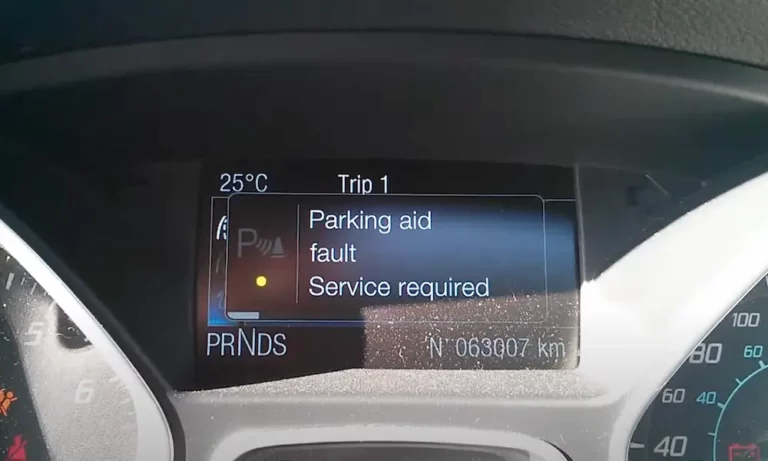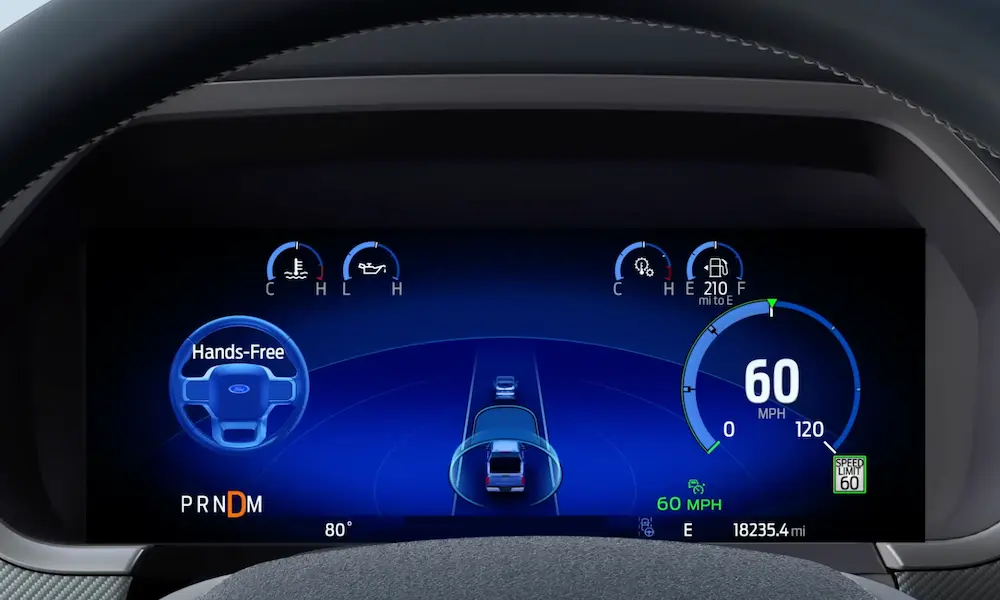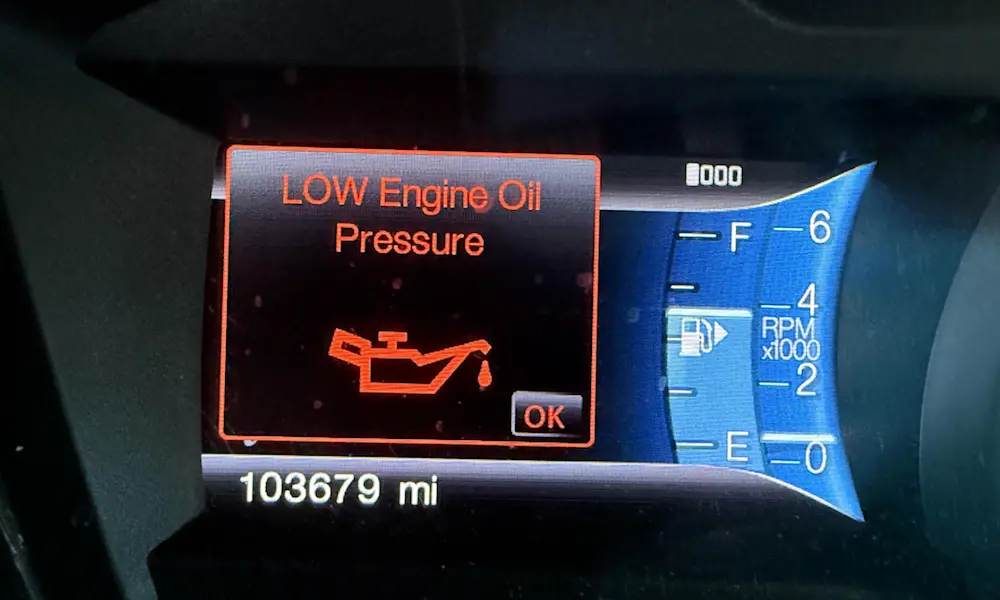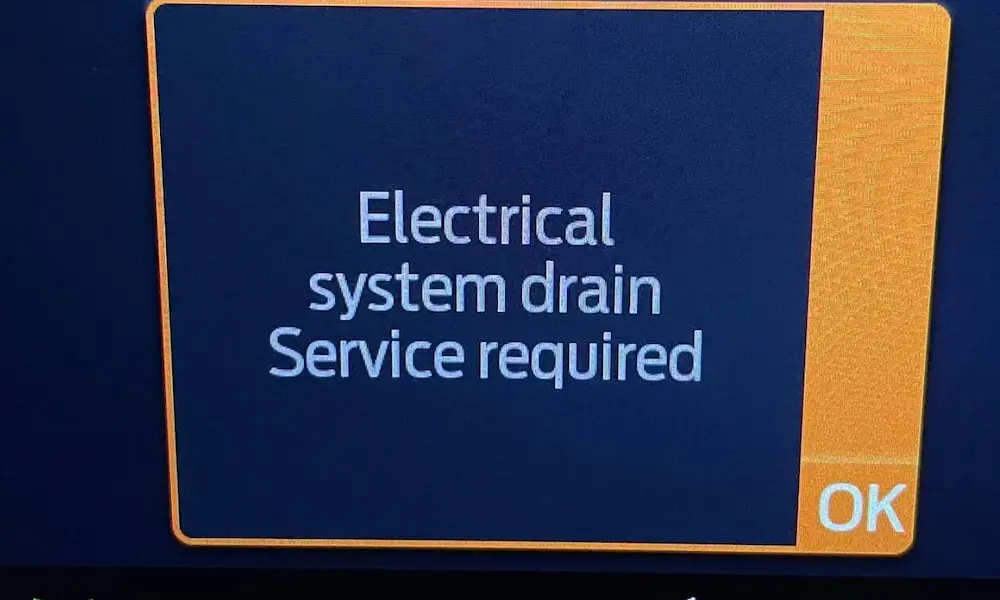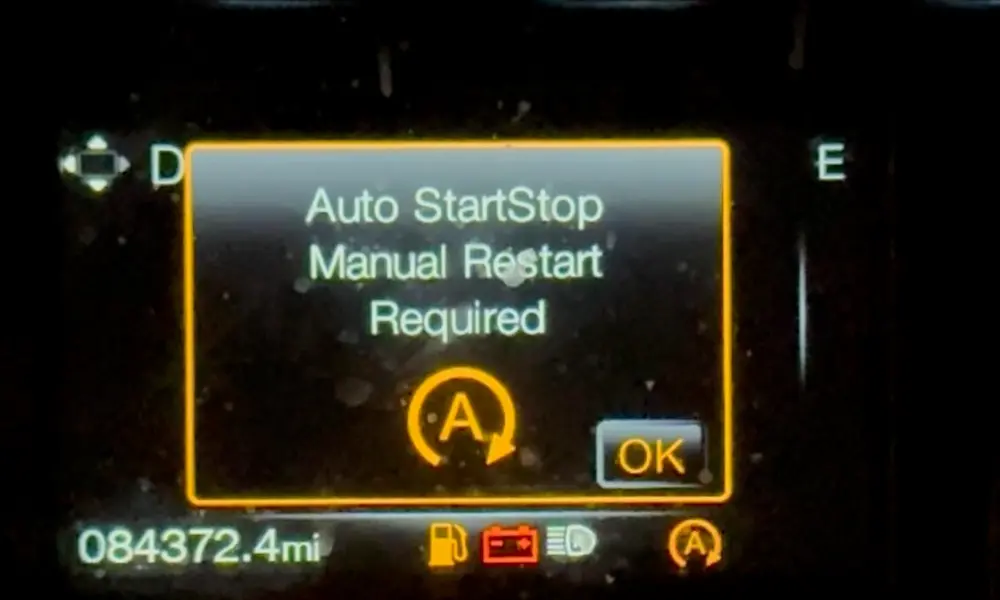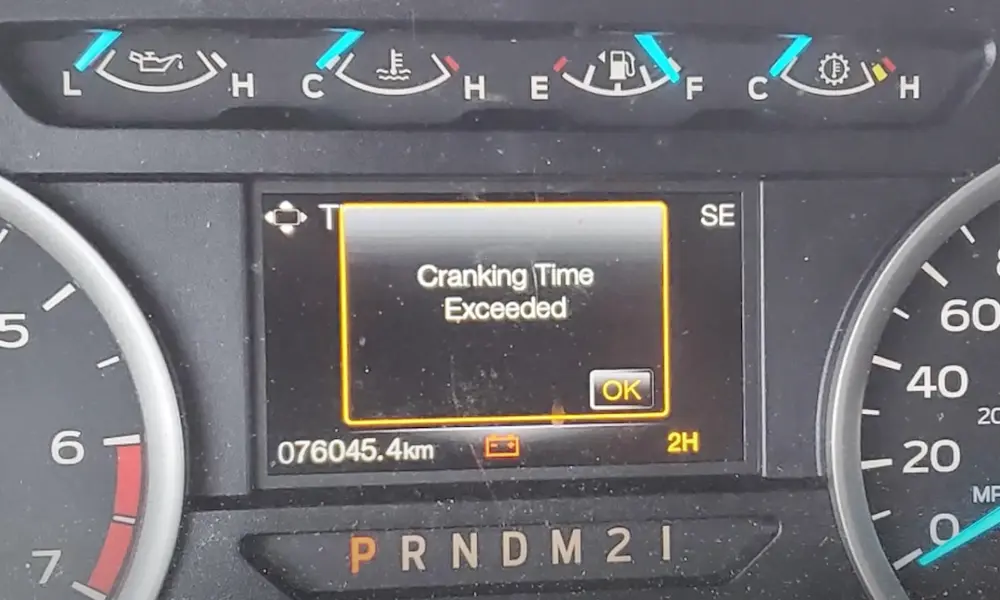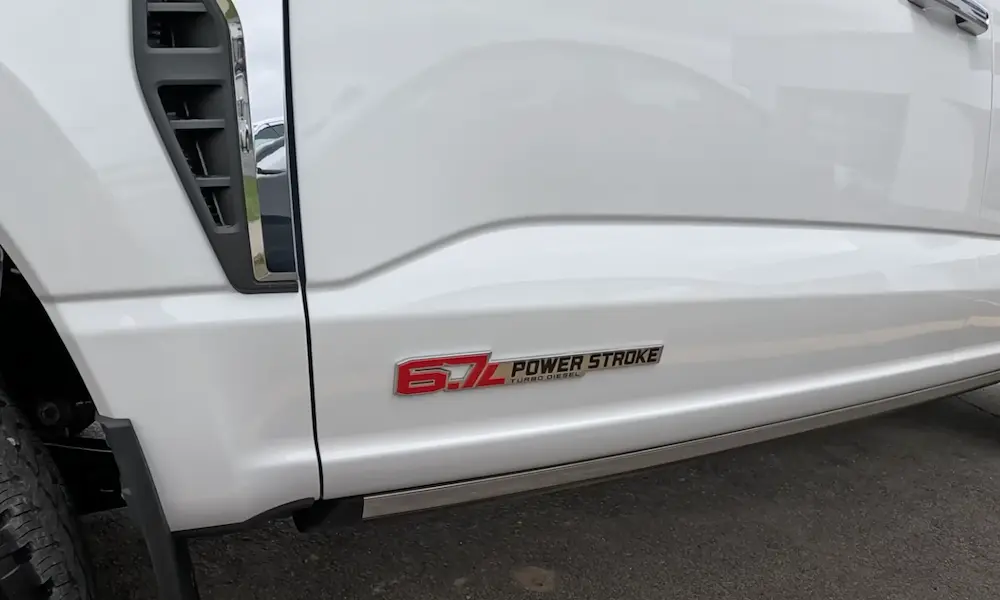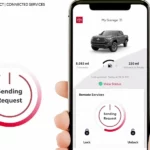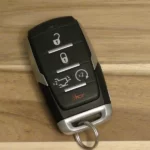Is your dashboard suddenly showing a “Parking Aid Fault Service Required” message? This unexpected warning can be frustrating, especially when you’re about to reverse into a tight spot. You might be wondering if this requires an expensive trip to the dealership or if there’s a simpler fix.
The good news is that many parking aid issues can be resolved without professional help. Let’s dive into what causes these errors, how to diagnose them, and the steps you can take to get your parking sensors working again.
What Does “Parking Aid Fault Service Required” Mean?
When your vehicle displays a “Parking Aid Fault Service Required” message, it’s alerting you that the parking assist system has detected a problem. This technology uses ultrasonic or electromagnetic sensors in your front and rear bumpers to detect obstacles while parking and warns you through beeps or visual displays.
Different manufacturers may show slightly different messages. Ford vehicles, for example, might display:
- “Park Aid Fault” for a system malfunction
- “Check Park Aid” for general system issues
- “Front/Rear Park Aid Not Available Sensor Blocked See Manual” when sensors are obstructed
These aren’t just informational messages—they indicate that your vehicle’s ability to detect nearby objects is compromised, which could lead to minor collisions if you’ve grown dependent on these systems.
How Parking Sensors Actually Work
Parking sensors emit acoustic pulses that bounce off obstacles near your vehicle. The system calculates distances based on how quickly these pulses return and increases the frequency of warning beeps as objects get closer. If any component fails—sensors, wiring, control modules, or power supply—the fault message appears.
Common Causes of Parking Aid Malfunctions
1. Dirty or Obstructed Sensors
The most frequent cause of parking sensor problems is simply dirt, snow, ice, or salt buildup on the sensors. This is particularly common during winter or after driving on muddy roads. One driver on Reddit reported: “The car has been covered in salt for the past few days and the parking sensors haven’t been working.”
2. Water Damage to Sensors
Water intrusion is another frequent culprit. These sensors are exposed to the elements and can collect water, especially after driving through deep puddles or using car washes. According to a YouTube tutorial, water ingress is “the most common cause for your parking sensor not working as it should.”
3. Wiring Problems
Defective wiring, loose connections, or corrosion can disrupt signals between sensors and the control module. One driver reports that “moisture exposure may trigger corrosion in wires over time. This can result in a loss of connectivity and signal strength.”
In a diagnostic video of a Ford Transit, a technician found that a damaged connector was causing a parking aid fault—showing how easily overlooked wiring issues can trigger these warnings.
4. System Glitches and Control Module Issues
Modern vehicles rely on complex computer systems. Sometimes, glitches in the onboard computer or Powertrain Control Module (PCM) can cause the parking aid to malfunction. Additionally, a faulty transmission control module can interfere with the parking aid system, particularly in Ford vehicles.
5. Environmental Influences
According to a technical service bulletin from the NHTSA, “new generation of ultrasound parking aid sensors are able to detect problems due to external influence such as dirt, ice, and external ultrasound signals.” When these external factors are detected, the system might temporarily disable itself to prevent false warnings.
6. Low Battery Power or Electrical Issues
A weak or faulty battery can cause inconsistent power supply to the parking aid system. Similarly, blown fuses can disrupt the electrical system and trigger warning messages.
7. Temperature-Related Issues
Some users report parking aid faults occurring only in specific weather conditions. One Ford Escape owner noted: “I see the warning every time I start my vehicle in temperatures of 20 degrees or lower,” suggesting that cold weather may worsen existing issues or create new ones.
How to Diagnose Parking Aid Problems
Before attempting any repairs, it’s important to identify what’s causing your parking aid fault.
Visual Inspection First
Start with a thorough visual check of all parking sensors:
- Look for dirt, mud, ice, or salt buildup on sensor surfaces
- Check for physical damage to sensors or bumpers
- Examine connections for looseness
- Look for signs of water intrusion
- Check for corrosion on connectors or wiring
Using Diagnostic Tools
For more precise diagnosis, vehicle-specific diagnostic tools can identify exactly which sensor or component is malfunctioning:
- OBD-II Scanners: Basic code readers can sometimes identify general system errors, though specialized scanners may be needed for parking aid systems.
- Advanced Diagnostic Tools: Specialized tools like the iCarsoft FD v1.0 can diagnose specific parking sensor faults. In a demonstration video, this tool identified a B1B44 fault code for a rear outer parking sensor.
- Professional Diagnostics: Dealership-level scanners can access manufacturer-specific diagnostic information for precise troubleshooting.
A Ford Escape forum user noted that after mechanics removed the front bumper for an intercooler installation, parking aid fault messages began appearing—showing how physical disturbances to the system can trigger problems.
DIY Solutions to Fix Parking Aid Faults
Many parking aid issues can be resolved without professional assistance. Here are effective DIY solutions:
1. Clean the Sensors
A simple first step is thoroughly cleaning each parking sensor:
- Use a soft, clean cloth to wipe each sensor
- For stubborn dirt, use mild soap and water
- Make sure sensors are completely dry after cleaning
2. Remove Water from Sensors
If water intrusion is suspected:
- Spray an oil-based lubricant like WD-40 on the affected sensors
- This displaces the water from the sensor components
- Wipe away excess lubricant with a clean cloth
A YouTube guide specifically recommends this method, claiming it’s “almost guaranteed to work when you have a faulty parking sensor on your car.”
3. Check and Fix Wiring Issues
Inspect wiring connections to the parking sensors:
- Look for loose connections and firmly reconnect them
- Check for corrosion or damage to wiring
- Clean corrosion with a wire brush or compressed air
- Repair or replace damaged wires as needed
As shown in a Ford Transit diagnostic video, sometimes the issue is simply a damaged connector that needs replacement or repair.
4. Reset the System
Several methods can reset the parking aid system:
- Disconnect the vehicle battery for 15-30 minutes to reset onboard computers
- Press and hold the parking aid button (if available) for an extended period
- Use a diagnostic tool to clear fault codes
A Reddit user tried this approach and reported: “After turning on the car and unplugging the car battery to reset the car, it still says Parking Aid Fault,” showing that while sometimes effective, resets don’t always solve underlying issues.
5. Check the Fuses
Examine your vehicle’s fuse box:
- Find the fuse associated with the parking aid system (check your owner’s manual)
- See if the fuse is blown and replace if necessary
DIY vs. Professional Repairs: When to Seek Help
While many parking aid issues can be fixed through DIY methods, some situations require professional assistance:
Complex Electrical Problems
If diagnosis reveals communication failures between control modules or internal sensor failures, specialized equipment and expertise may be needed. A diagnostic scan showing “lost communication with side obstacle detection control module” indicates more complex issues.
Software Updates or Reprogramming
Some parking aid issues require software updates or “reflashing” the vehicle’s computer systems. This process needs dealer-level equipment and typically can’t be performed at home.
Physical Damage Requiring Replacement
If sensors or control modules are physically damaged, professional replacement may be necessary. Multiple Reddit users reported eventually taking their vehicles to dealerships for warranty service after DIY attempts failed.
Recalibration After Bumper Work
If your bumper has been removed for repairs, the parking aid system might need recalibration. A Ford Escape forum member noted that after mechanics removed the front bumper, persistent parking aid fault messages appeared, suggesting sensor positions may have been disturbed.
Cost Comparison: DIY vs. Professional Repair
| Repair Method | Typical Cost | Time Required | Success Rate |
|---|---|---|---|
| DIY Cleaning | Free – $5 | 15-30 minutes | High for dirt/debris issues |
| DIY Water Removal | $5-$10 | 20-40 minutes | High for water intrusion |
| DIY Wiring Repair | $10-$50 | 1-2 hours | Moderate |
| DIY System Reset | Free | 15-30 minutes | Moderate for minor glitches |
| Professional Diagnosis | $50-$150 | 1 hour | High |
| Professional Sensor Replacement | $150-$500 | 1-3 hours | Very high |
| Dealer Software Update | $100-$200 | 1 hour | High for programming issues |
Preventative Maintenance for Parking Aid Systems
To reduce the likelihood of parking aid failures, consider these preventative measures:
Regular Cleaning
Periodically clean your parking sensors, especially after driving in adverse weather conditions or on dirty roads. This simple maintenance can prevent many common issues.
Protect Sensors During Car Washes
High-pressure car washes can sometimes force water into sensor housings. Consider using touchless car washes or manually washing sensor areas with less pressure.
Inspect Wiring Periodically
During routine maintenance, check visible sensor wiring for signs of wear, damage, or corrosion, particularly if you frequently drive in wet or snowy conditions.
Maintain Battery Health
Since low battery power can affect parking aid performance, ensure your vehicle’s battery is in good condition, especially during cold weather when battery performance naturally decreases.
Parking Aid Technology Evolution and Future Trends
Modern parking systems have evolved significantly from basic sensors:
Current Technology
Today’s vehicles often integrate parking sensors with cameras and cross-traffic alerts for comprehensive assistance. These systems provide visual guides on screens and can even take control of steering during parallel parking.
Future Developments
Emerging technologies include:
- AI-enhanced object recognition that can distinguish between objects
- Self-healing sensor systems that can automatically compensate for minor malfunctions
- Integration with smartphone apps for remote diagnostics and troubleshooting
- 3D mapping capabilities that remember frequent parking locations
Final Thoughts on Dealing with Parking Aid Faults
Parking aid fault messages, while frustrating, often indicate relatively simple issues that can be addressed without expensive repairs. By understanding the common causes and following a systematic approach to diagnosis, many drivers can restore their parking aid functionality through DIY methods.
For persistent issues, especially those involving complex electrical systems or physical damage, professional diagnosis and repair may be necessary. Addressing parking aid faults promptly not only restores convenience but also maintains an important safety feature of modern vehicles.
As vehicles continue to incorporate more advanced driver assistance systems, knowing how to troubleshoot these technologies becomes increasingly valuable for cost-conscious vehicle owners who want to maintain their vehicles’ full functionality.

